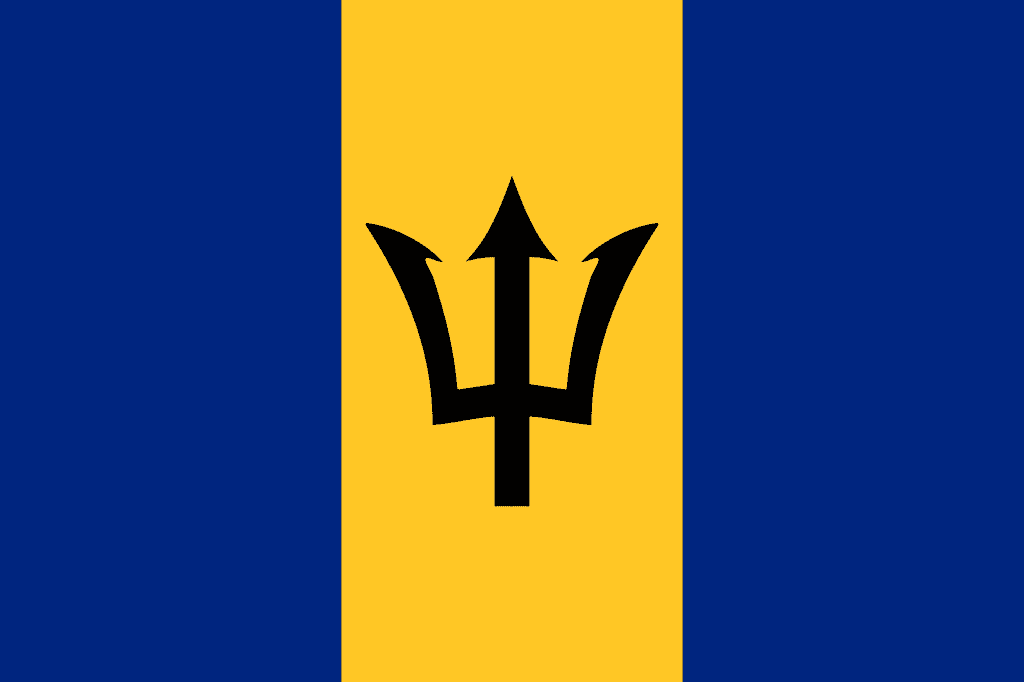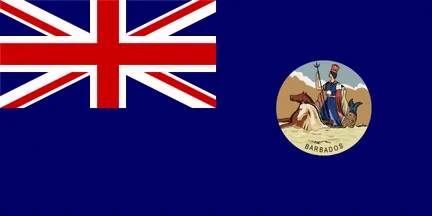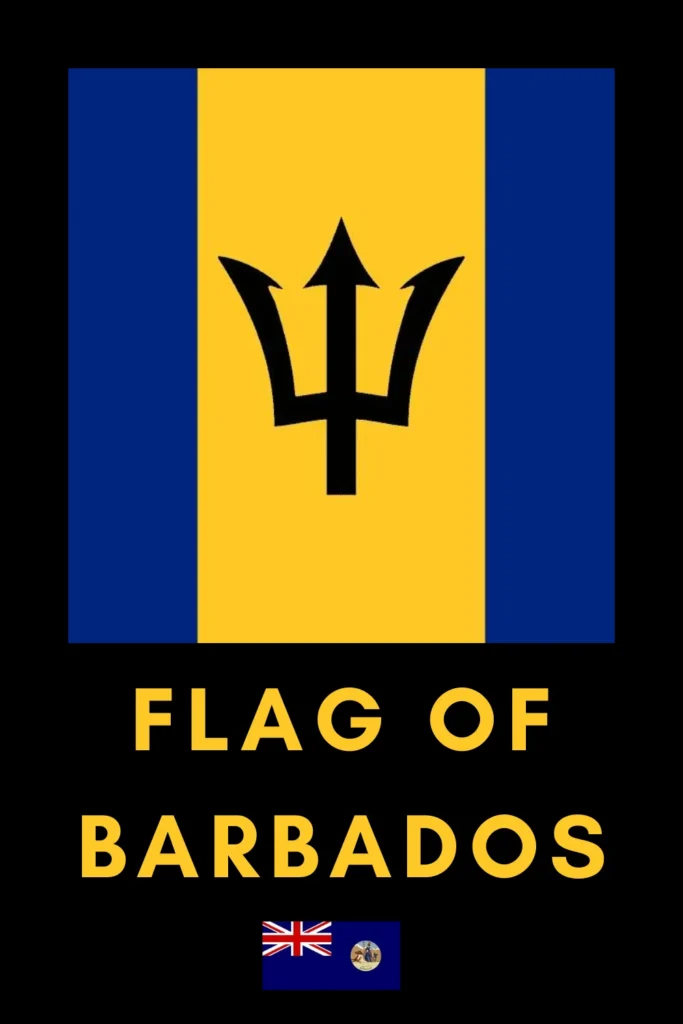Flag of Barbados
The flag of Barbados was adopted on the 30th of November, 1966, the day the country gained independence from British colonial rule and designed by Grantley W. Prescod.
The flag features a vertical triband of ultramarine and gold, with a black trident-head centred on the gold band.
The trident on the flag is a powerful symbol, representing the broken trident of Britannia, symbolizing the end of colonialism and the country’s independence.

Flag Design and Symbolism
The flag of Barbados holds deep symbolism and reflects the country’s history and journey to independence. The broken trident on the flag is a powerful symbol, representing the broken trident of Britannia, the personification of Britain. This symbolises the end of colonial rule and the country’s independence.
The flag is a testament to Barbados’ strong sense of national identity and its determination to forge its path. It stands as a symbol of freedom, resilience, and pride for the people of Barbados.
The flag of Barbados consists of three main elements: the blue field, the yellow field, and the black trident.
- The blue field represents the sea and the sky, symbolizing the close connection of Barbados to the ocean and the vastness of the surrounding waters.
- The yellow field represents the sand, emphasizing the country’s beautiful beaches and its status as a popular tourist destination.
- The black trident, centred on the gold band, is the most iconic element of the flag. It represents the broken trident of Britannia, symbolizing the end of colonial rule and the country’s independence.
The flag has a proportion of 2:3, meaning its length is 1.5 times its width. The colours used in the flag are ultramarine and gold, with specific colour codes assigned to them.
Manufacturing standards dictate the use of specific colour codes for the flag’s colours. The ultramarine colour is assigned the PMS code 280 C, while the gold colour is assigned the PMS code 123 C. These codes ensure consistency across the production of the flag.
History of Barbados Flag

Before independence, Barbados was a British colony. Therefore, its flag bore the Union Jack, the flag of the United Kingdom, as a symbol of colonial rule.
Barbados gained independence from Britain on November 30, 1966. With independence came the need for a new national flag to represent the sovereignty and identity of the newly independent nation.
Grantley W. Prescod, an art teacher, designed the flag and was chosen as the winner of an open competition arranged by the Barbados government and judged by seven individuals.
He was awarded a $500 cash prize, which was donated to a popular newspaper publishing company, a scroll from the Barbadian government, and a gold medal.
The flag of Barbados is proudly displayed on government buildings, schools, and other official institutions throughout the country.
Frequently Asked Questions
What does the trident symbolize in the Barbados flag?
The trident symbol on the Barbados flag represents the broken trident of Britannia. It symbolizes the end of colonial rule, independence from Britain, and the country’s journey towards self-governance and sovereignty.
How should the Barbados flag be displayed during national events?
During national events, the Barbados flag should be displayed with respect and under official protocol. It should be hoisted and lowered in flag-raising and flag-lowering ceremonies, often accompanied by the national anthem and attended by government officials and dignitaries.


